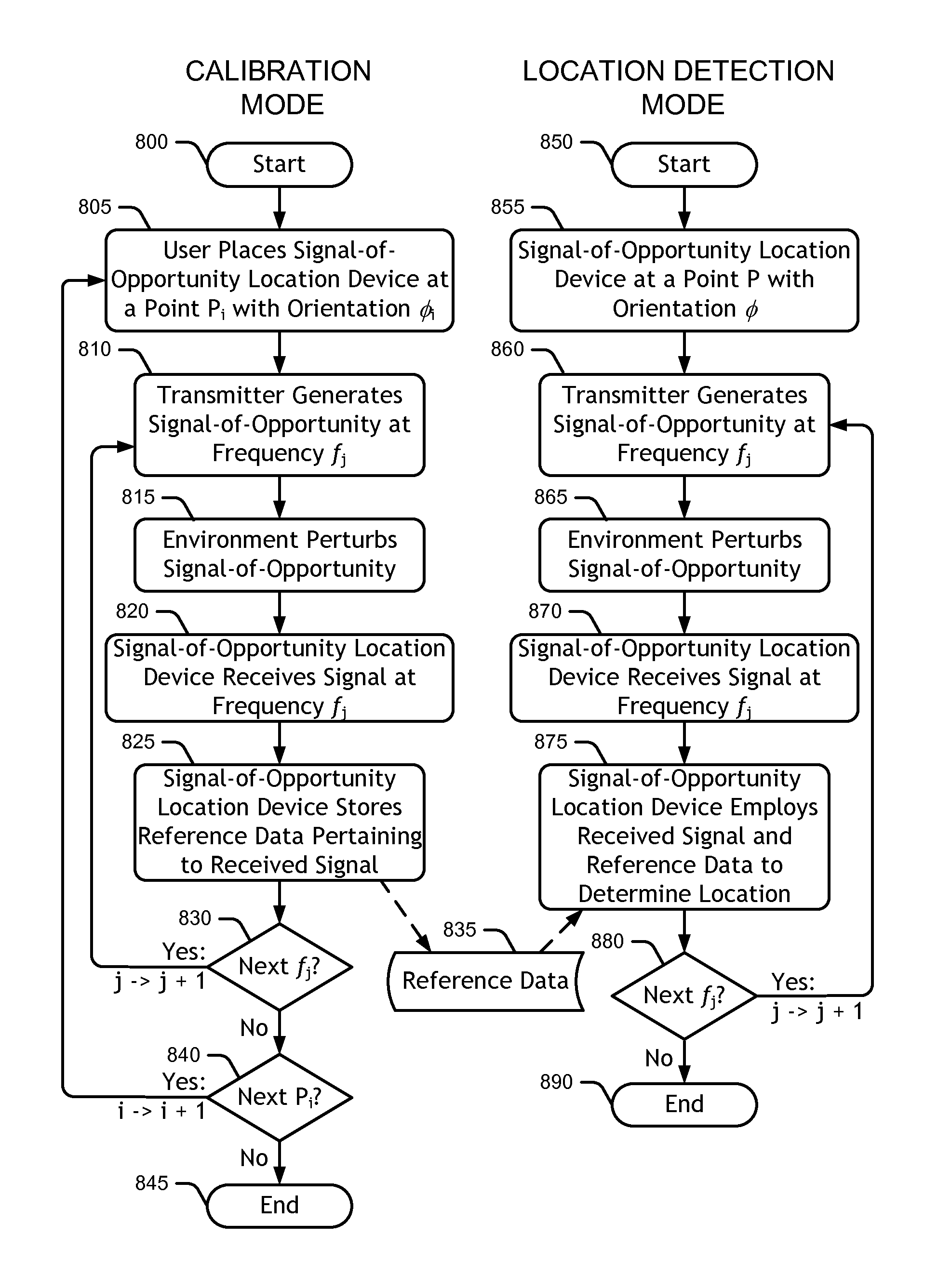Method and apparatus for determining location using signals-of-opportunity
a technology of location and signal, applied in the direction of direction finders, direction finders using radio waves, instruments, etc., can solve the problems of inherently imprecise positioning based on relative signal strength, rapid variations in amplitude and phase, and effective scrambling or even blocking of radio frequency signal propagation
- Summary
- Abstract
- Description
- Claims
- Application Information
AI Technical Summary
Benefits of technology
Problems solved by technology
Method used
Image
Examples
Embodiment Construction
[0034]A preferred embodiment of the disclosed location determining system employs “signals-of-opportunity” in the standard broadcast AM band to determine the location of a particular radio receiver. Some conventional RF fingerprinting approaches may locate a mobile transmitter with respect to a network of local receivers using frequencies not associated with the standard broadcast AM band. However, in the preferred embodiment of the disclosed location determining system, a signal-of-opportunity location detector (SOLD), namely an individual receiver, locates itself with respect to a number of distant AM broadcast stations. Other embodiments may employ other frequencies less than or greater than those of the standard broadcast AM band (520 KHz-1710 KHz) depending on the particular application.
[0035]Near field electromagnetic ranging (NFER) is a technique useful for determining location. One NFER approach uses a local beacon transmitter and a locator receiver. The beacon transmitter t...
PUM
 Login to View More
Login to View More Abstract
Description
Claims
Application Information
 Login to View More
Login to View More - R&D
- Intellectual Property
- Life Sciences
- Materials
- Tech Scout
- Unparalleled Data Quality
- Higher Quality Content
- 60% Fewer Hallucinations
Browse by: Latest US Patents, China's latest patents, Technical Efficacy Thesaurus, Application Domain, Technology Topic, Popular Technical Reports.
© 2025 PatSnap. All rights reserved.Legal|Privacy policy|Modern Slavery Act Transparency Statement|Sitemap|About US| Contact US: help@patsnap.com



